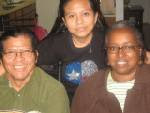Orlev,Uri. 1991. THE MAN FROM THE OTHER SIDE. tr. by Halkin, Hillel. New York: Houghton Mifflin. ISBN 0395538084.
Plot Summary
Marek, a Polish fourteen-year-old boy, and his grandparents help a Jewish man during the aftermath of World War II. Marek, his mother and step-father lived near the Warsaw Ghetto. Marek helped his step-father smuggle food, traveling through the underground sewer, to the Jews in the ghetto. The first chapter has murder, baby smuggling, and teenage smoking. Marek later learns that his father was Jewish. His life changed and he was now part of the people he had learned to hate. Uri Orlev lived through the poverty, death, and pain of war. He used his experience to develop a story of survival and escape without dwelling on sensational details. He made it clear that we all are "human beings" and his message about humanity made it a story worth telling.
Critical Analysis
Orlev knew what it was like to be hated because of your culture. He had lived through it as a child in the Wasaw Ghetto. Details of the wall and who lived on either side of the Ghetto painted the reality of war. Part of it was the ability for human beings just to endure and survive the war. Orlev provided first hand details of Poland and communist from the prospective of a teenager.
Secrets that were kept from families, government, and neighbors was a tool of survival. It was a way of life. Marek, kept all kinds of secrets. So did his mother, until she had to tell him about his father. The secrets were to protect his family. . Spies and informers are part of world history. This fact was used to develop the character of Marek's grandmother. "She did something else there too that I wasn't suppose to know about: as innocent as she looked, she transmitted messages for the Polish Home Army."
Marek and Antony were the main Polish characters. Antony drunk a lot of vodka and this detail was to refer to the alcohol associated with Polish or Communist groups. Details of how the Jews were burned and other torture were cultural markers. Descriptions of Jewish clothes and food helped to mark authentic details. Polish and Jewish language were used in places to keep their characters authentic. Pan Jozek, twenty-zloty German cigarettes, Poles, and kikes.
Most of the story takes place between Marek's grandparent's apartment, his home, and the Jewish Ghetto. Marek travels on streetcars, through sewers, and short cuts through demolished homes are cultural markers. He does visit the Catholic Church often to pray. A parallel war between the two religions Catholic and Judaism allows the reader to see the depth of the hatred. Marek faces the death of his friend, Jan Jozek, after he helped him return to fight in the Jewish uprising. The Jews fought a hopeless battle with the Germans.
Marek insists that Jan Jozek be buried instilling a great friendship with an enemy. Antony proves his love for Marek when he risks the safety of the Jewish escape and insists that they find Marek. The only thing that Antony wanted was to adopt Marek, even if he was part Jewish, and that does happen. Marek, his mother and step-father do escape which allows the reader to end with a feeling of hope.
Orlev writes a story of bravery, hopelessness, and the fate of the Warsaw Jews as they fought alone and heroically against the German Army.
Review Excerpts
Hans Christian Andersen Award 1996
The Batchelder Award
School Library Journal--Characterizations are vivid and finely drawn, even those of minor figures such as Marek's empathetic mother who is embarrassed by her countrymen's hatred of Jews; his crude, contradictory stepfather; and his grandparents, who treat Jozek as a family member, all the while hating Jews. This is a story of individual bravery and national shame that highlights just how hopeless was the fate of the Warsaw Jews as they fought alone and heroically against the Nazi war machine.
Kirkus Reviews-- Antony dislikes Jews but, knowing Marek's background, wants to adopt him; he turns others' dire needs to profit but has ``nothing against human beings.'' Many others in this richly authentic story are equally complex. Subtle, beautifully crafted, altogether compelling.
Connections
Teachers could use this book to make a connection to the present Iraq War. What will happen to the children? Religious groups can use this to help teens be more respectful and tolerant of other religions.
Look at these other books about children of war, religious differences:
Orlev, Uri. Run, Boy, Run. ISBN-10: 0618957065 ISBN-13: 978-0618957064
Yumoto, Kazumi. The Friends. ISBN-10: 0374424616 ISBN-13: 978-0374424619
Richter, Hans Peter. Friedrich. ISBN-10: 0140322051 ISBN-13: 978-0140322057
Yolen, Jane. The Devil's Arithmetic. ISBN-10: 0142401099 ISBN-13: 978-0142401095
Saturday, September 13, 2008
Subscribe to:
Post Comments (Atom)


No comments:
Post a Comment